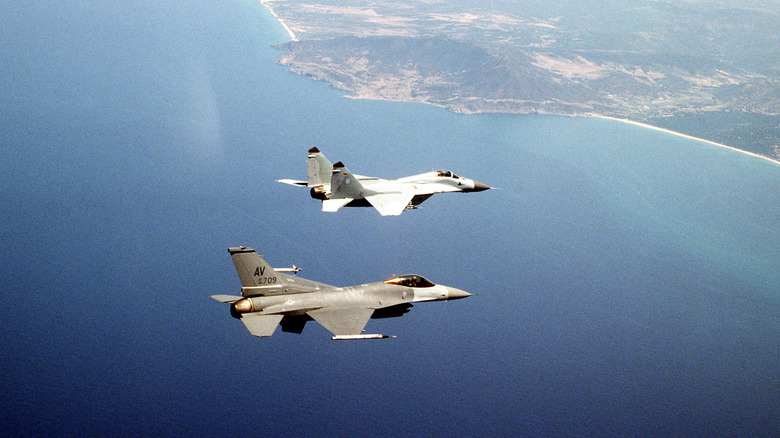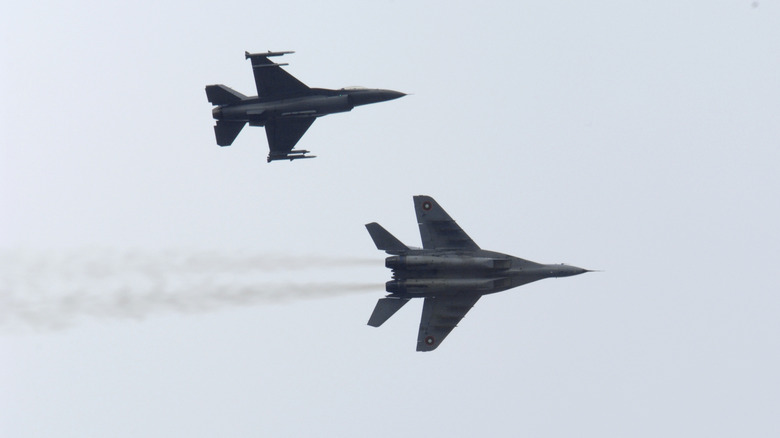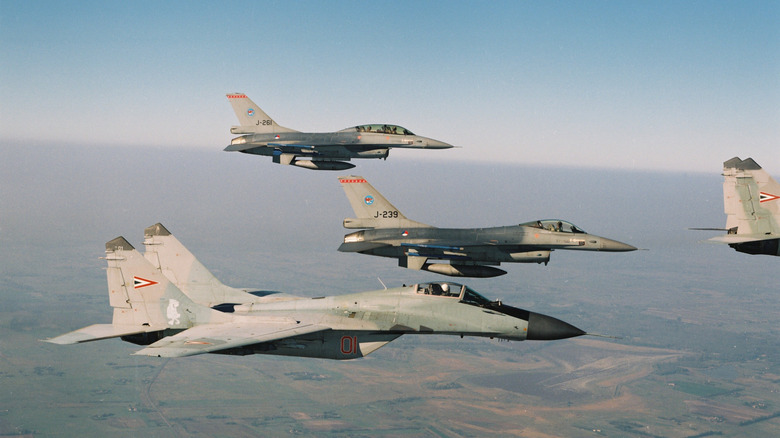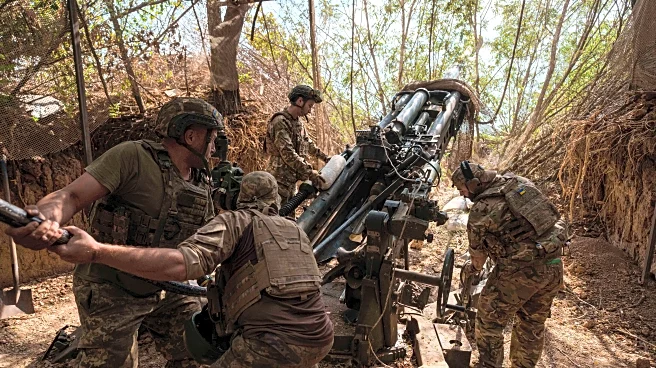
In the race to become the world's premier military power, the Soviet Union and the United States produced a bevy of technologies throughout the Cold War that still define the modern military landscape. Recent headlines continue to trace their origins to the famed 20th-century arms race between the rival hegemons, ranging from the Golden Dome's roots in the space race to the conflict between Iran and Israel's roots in the Cold War debate over nuclear stockpiles.
One of the most influential technological
challenges of the era was the search for the world's best fighter jet, which birthed two of the most iconic warplanes of all time: the F-16 and MiG-29. Originating from the Pentagon's desire for a new lightweight fighter jet, the F-16 Fighting Falcon has been one of the most fearsome fighters to grace the skies, compiling a 76-1 air combat record since its operational debut in 1979. In nearly half a century, 25 countries have operated the F-16, conducting over 13 million sorties and racking up over 19 million flight hours.
To counteract the success of America's F-16, the Soviets built the Mikoyan-Gurevich (MiG)-29, a fearsome fourth-generation dual-purpose fighter with air and ground attack capabilities. Nicknamed the Fulcrum by NATO, the MiG-29 is a formidable fighter capable of outpacing its American counterpart. Although the F-16 was a more advanced aircraft, the MiG-29 brought a more powerful engine, higher flight ceiling, and advanced radar and targeting systems, making it a dangerous foe for Western pilots. Both aircraft continue to be the bedrock of several air forces, a testament to the lasting impact of these Cold War-era fighters.
Read more: 11 Of The Most Iconic Ground Attack Military Planes In History
Lean, Mean, Fighting Machines

First conceived in the 1970s, General Dynamics fashioned its F-16 to be smaller, faster, and cheaper than its predecessors, whose large size made them increasingly burdensome and difficult to maneuver during combat. Weighing 19,700 pounds, stretching 49 feet long, and with a wingspan of nearly eleven yards, the jet was only a fraction of the size of the Air Force's primary air-combat fighter in Vietnam, the McDonnell Douglas F-4C Phantom II.
At its debut, the F-16 was the most advanced combat plane on the market, packing more advanced technologies into its smaller packaging to make it increasingly agile. Powered by either a Pratt and Whitney F-100 or General Electric F110 turbofan engine, the jet can reach Mach 2 speeds, roughly 1,500 mph, while delivering 27,000 pounds of thrust and climbing to a ceiling just above 50,000 feet. The one-seater also boasts one of the longest flight ranges of any fighter jet at 1,740 nautical miles on 12,000 pounds of fuel.
The MiG-29, for its part, is slightly larger than its American rival. With a length of almost 57 feet and a wingspan of 37.5 feet, it weighs nearly 5,000 pounds more than the F-16. Within that larger frame, however, the MiG-29 brings more thrust and speed than the Falcon, using its two Isotov RD-33 turbofan engines to reach Mach 2.3 and deliver over 25% more thrust. This extra juice enables the MiG-29 to climb to even higher altitudes, up to nearly 60,000 feet. The multi-role fighter's range falls short of its American counterpart, however, reaching only 1,400 nautical miles.
It's A Dogfight

Despite lagging behind the MiG-29 in both speed and power, the F-16 has a distinct advantage over the MiG-29, particularly in the early days of their respective designs: maneuverability. From the onset, the F-16 utilized a fly-by-wire system -- in which electrical wires replace cables to relay pilot commands more efficiently –- giving its pilots more control during high G-force combat. The MiG-29 was designed with the typical hydraulic flight control system, a deficiency that has since been corrected. Another discrepancy that has since been corrected was its use of aluminum alloy rather than composite materials for the fuselage.
In terms of armament, both are similarly equipped aircraft. The Fulcrum is armed with six air-to-air missiles and a single-barreled 30mm GSh-301 autocannon. The F-16, meanwhile, also brings six air-to-air missiles into a dogfight while sporting a multibarreled M-61A1 20mm cannon with 500 rounds of ammunition. Both are also multi-purpose aircraft capable of carrying relatively heavy payloads. The F-16, for instance, can carry up to two 2,000-pound bombs, while the MiG can support bombs and 57mm, 80mm, and 240mm rockets. In addition to their traditional arsenals, both jets are also capable of carrying nuclear payloads.
To this day, the two fighter jets continue to be integral pieces of global air force fleets. With more than 4,500 F-16s spread across 25 militaries, the Falcon -- now produced by Lockheed Martin after the company purchased General Dynamics' fighter jet division -- has continued to evolve to remain one of the fiercest combat jets in history. Meanwhile, the MiG-29 Fulcrum continues to be deployed by dozens of countries, including Poland, India, Iran, and Ukraine.
Want the latest in tech and auto trends? Subscribe to our free newsletter for the latest headlines, expert guides, and how-to tips, one email at a time.
Read the original article on SlashGear.













